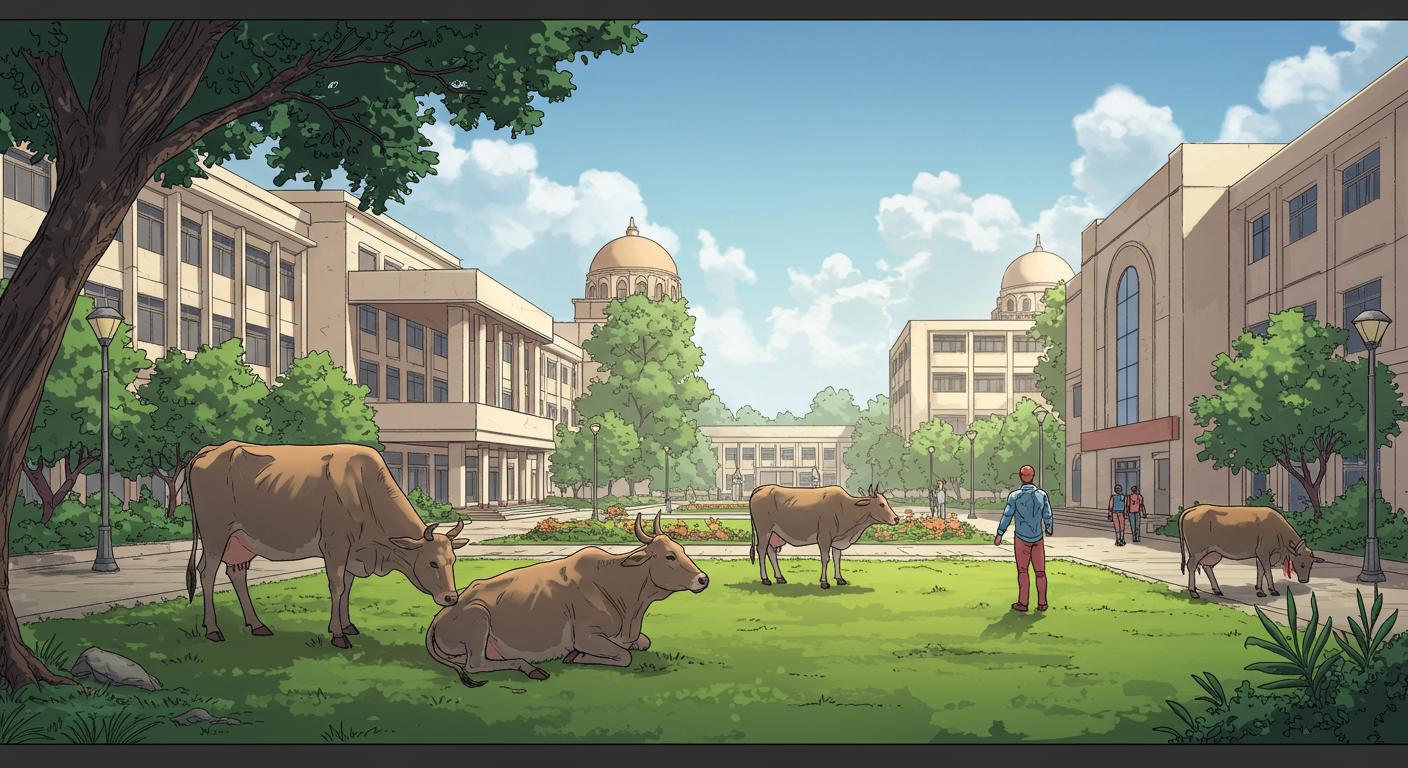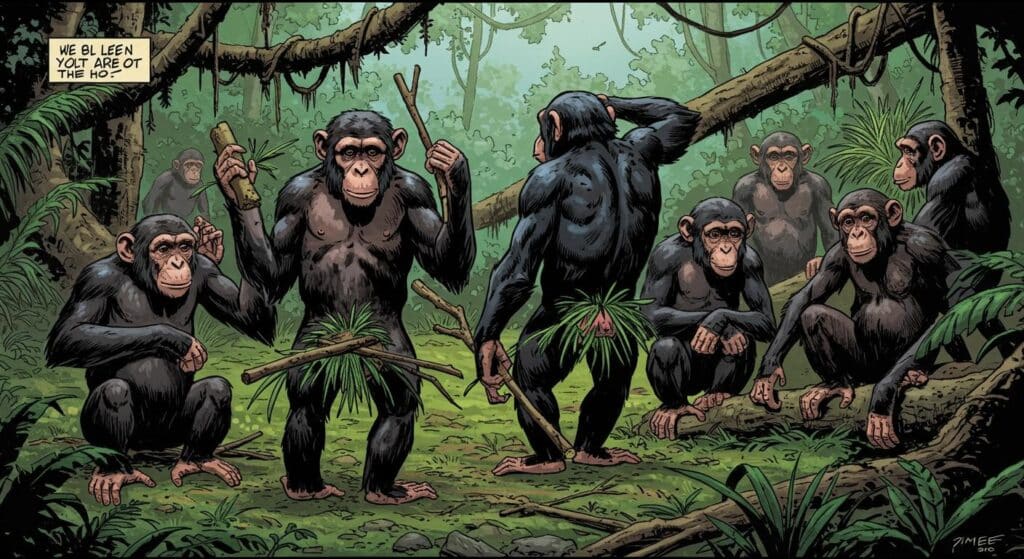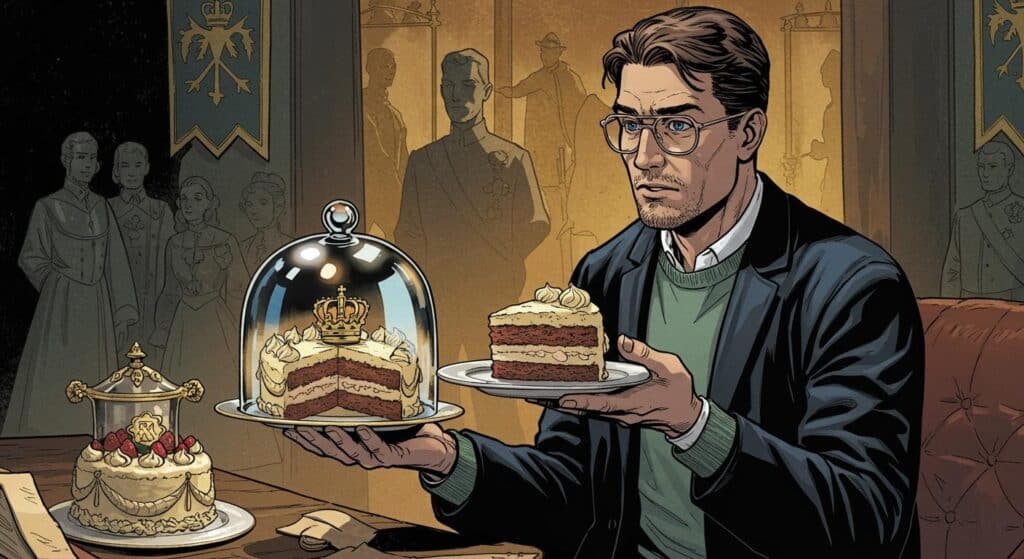Well, file this one somewhere between “ancient wisdom meets modern campus planning” and “genuine administrative head-scratchers.” As reported by The Indian Express, Veer Narmad South Gujarat University (VNSGU) in Surat is set to welcome five to seven cows onto the premises—not as mascots or experimental subjects, but as living conduits for “positive energy.”
A New Building—Plus Bovine Ambassadors
Let’s start with the foundational details. The university, according to The Indian Express, recently tore down its 48-year-old administrative building after a survey declared it unsafe. With the help of a Rs 30 crore government grant, VNSGU plans a much taller, more modern headquarters—an upgrade from two to up to six floors, promising expanded office space and new parking. Standard university expansion, by the book so far.
The actual twist is that, beyond consulting architects, the university enlisted help from a Jyotish Shashtri (astrologer) and Vastu experts, all to identify auspicious spots for the new construction. The Indian Express recounts that after the experts settled on three suitable locations, an astrologer recommended a unique prescription for the university’s persistent woes—a small herd of cows, to be kept at the chosen site in a temporary shed for about a month. The rationale? Generating positive energy to help smooth operations and clear away issues that have recently plagued university life, such as exam paper leaks, low undergrad pass rates, and backlog in construction tenders.
VNSGU Vice Chancellor Dr. K N Chawda explained to the outlet that the university is coordinating with NGOs to provide and care for these cows during their stay, emphasizing that special care will be taken to meet the astrologer’s advice for good vibrations. One wonders, as the cows contemplate their temporary administrative roles, what other professions they imagined for themselves.
The Kamdhenu Chair: Coursework with a Twist
But the cows aren’t just a one-month feature; VNSGU has plans for a “Kamdhenu Chair” in its biotechnology department as well. The Indian Express specifies that this new academic initiative will center on a four-credit multidisciplinary elective titled “Cow-based Research and Entrepreneurship.” The elective is set to cover subjects ranging from cow-based farming, organic product development, and biogas technology to the role of Ayurveda. As described by the outlet, this chair will promote pioneering research into biofertilizers, natural pesticides, and other cow-derived products, with dedicated workshops and training programs organized for students, farmers, and aspiring entrepreneurs.
The university aims to foster collaborations with industry partners to support student start-ups and broader skill development, all in line with the National Education Policy 2020, which encourages practical, local knowledge in higher education. It’s a contemporary take that combines scientific research, market awareness, and, well, a direct line to the animal kingdom.
Old Problems, New Rituals
According to The Indian Express, much of this effort is a response to an unusual confluence of recent troubles. Where most universities try to solve issues like exam security and construction snags through official channels and new technologies, VNSGU is, at least temporarily, placing its faith in astrological advice and a bit of traditional livestock wisdom.
The process isn’t meant to replace standard institutional oversight; architects are still designing the actual building and staff are sorting out administrative logistics. But here, ritual is getting as much stage time as regulations and blueprints—suggesting a blend of old-school optimism and a “leave no stone—or cow—unturned” approach to university management.
Cow Chips and Credit Hours: Where Does This Lead?
If “positive energy” delivered by cattle really can tip the balance in favor of smooth sailing, could this become a template for other universities facing bureaucratic or construction headaches? Or might future students reflect on this episode as one of academia’s more memorable detours into the curious and the arcane?
As the Indian Express outlines, the university is earnest in its attempt to integrate tradition, modern science, and hands-on learning into one big, moo-ving package. It’s easy to grin at the collision of ritual and research, but it’s also oddly reassuring to see administrators willing to try something so out-of-the-box. At the very least, the cows are unlikely to file complaints, and if the next exam season or construction project goes off without a hitch, perhaps VNSGU will find itself with more applicants to its peculiar brand of cow-based curriculum.
In India, the borders between the transcendental and the tangible are famously blurry. Maybe, just maybe, a month spent in the company of cows is exactly what the doctor—or, in this case, the astrologer—ordered.







